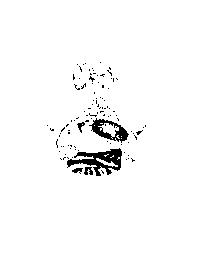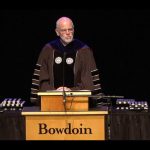From southern California to midcoast Maine, five Bowdoin students are pursuing self-directed artistic endeavors with the help of Bowdoin’s Kaempfer Art Grants. Reporter Talia Cowen ’16 caught up with three of the five artists: Elena Gleed ’18, Rachel Zheng ’16 and Elizabeth Snowdon ’17.

Elena Gleed ’18, Rachel Zheng ’16, and Elizabeth Snowdon ’17 (from left to right) are all working on art projects this summer
This summer, Gleed, Zheng and Snowdon are pursuing self-directed projects and research. Interacting with communities at home and abroad, they each say they have gained new perspective on their identities and their art.
Gleed’s summer project focuses on Bowdoin’s place, and her own, in the context of current events and natural disasters. Prompted by the death of two friends in the Nepal earthquake, she is dedicating her work to “thinking about Bowdoin’s relationship with the outside world and world events.” Using collage, watercolor, drawing and other mixed media (including, she says, “images of the Bowdoin student body in different settings”), Gleed is exploring this relationship by juxtaposing Bowdoin-based images with those of the world beyond the college.
Much of the artwork that Zheng has been working on in Southern California has been about her identity as a Chinese-American woman. Initially, she sought to create pieces inspired by the Light and Space movement of the 1960s, a minimalist movement that focused on geometric shapes and how light affected an environment or viewer’s perspective. But her trajectory has shifted to become more about “how being a female artist of color plays into [her artwork]” in the context of a movement that was dominated by white men.

Elizabeth Snowdon is “exploring ideas of hybridization, genetic modification, and the role of human influence in the design of new species,” with her artwork this summer
Inspired by a collage she completed last semester in a class called Bio Art: Creative Inquiry at the Intersection of Art and Science and an artist’s talk by Saya Woolfalk in April, Snowdon is working on a body of work where “the biological meets the inventive.” “I’m seeing where the imagination can take structures that are familiar and recognizable and making them fantastical and inventive and new,” she said. Her work uses images from biological textbooks and drawings of fauna to create “bizzare” and “quirky” beings. Put differently, Snowdon has been investigating how human imagination fits into our natural systems and “the infusing of our [human] ideas into a natural world.”
To Snowdon, the ability to focus solely on her art this summer has produced “something more meaningful, more finished, more complete, more thoughtful” than anything she could have done in whatever free time she might have squeezed around a job or internship. “I think I have a greater confidence in my conceptual ability as an artist,” she added. Although some might find it daunting, Gleed said that “it’s been exciting to have no requirements or boundaries” on her work for a long stretch of time.
When they return to Bowdoin this September, the three students plan to continue the work they began over the summer. Zheng, for example, said she wants to create public art pieces to explore further how the Light and Space movement translates to Maine since it took place predominantly in California.
At the end of the summer, Zheng and Gleed will fly back to Maine from the West Coast, and Snowdon will make the short drive from Topsham to Bowdoin. They, plus Tess Hamilton ’16 and Julie O’Donnell ’17 who also received the grant, will each prepare a public presentation and exhibition about their summer work.
